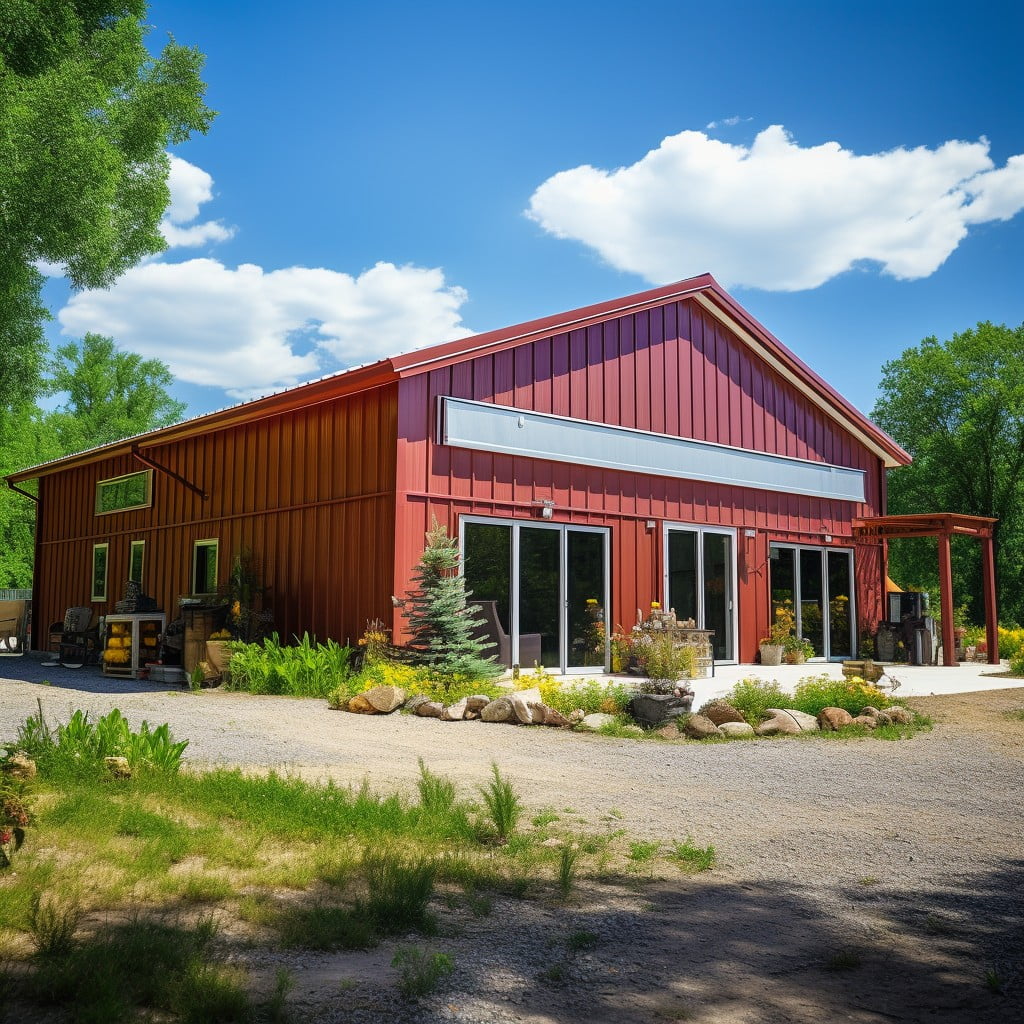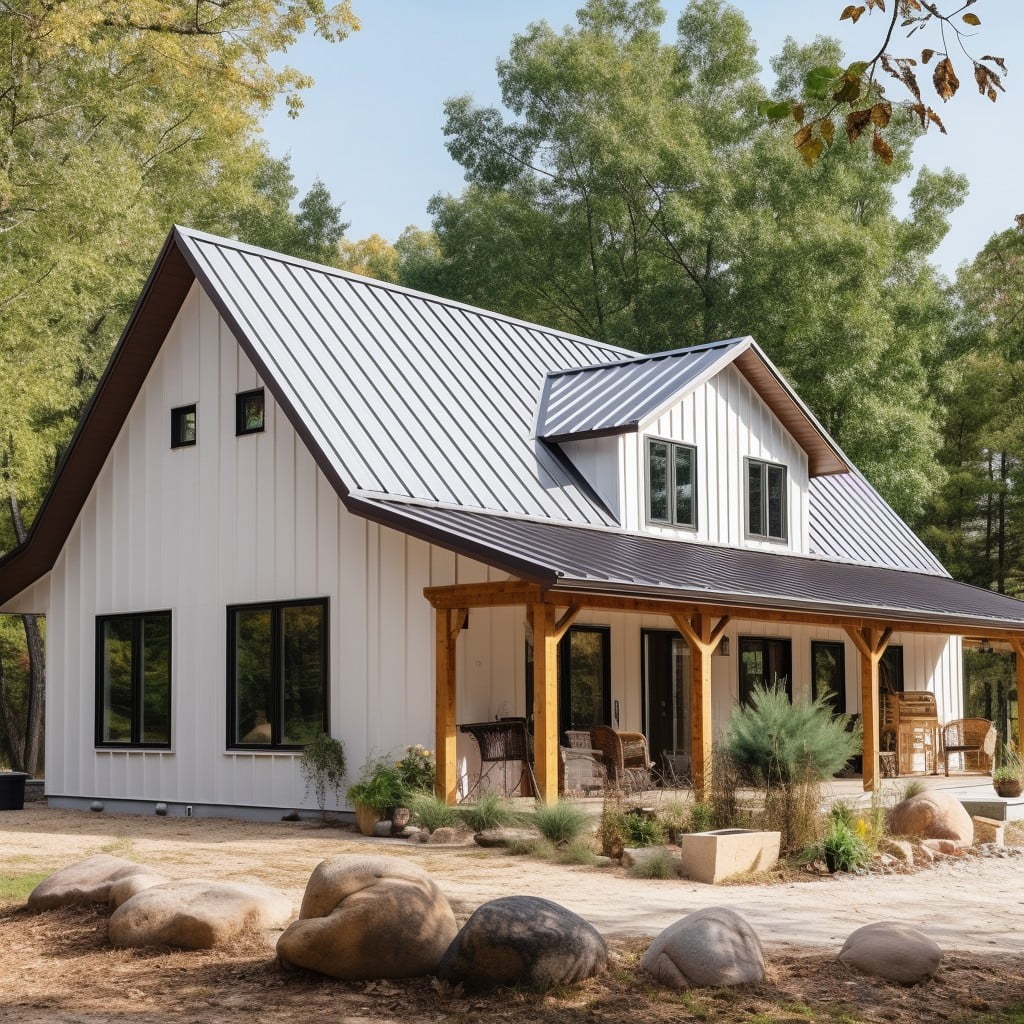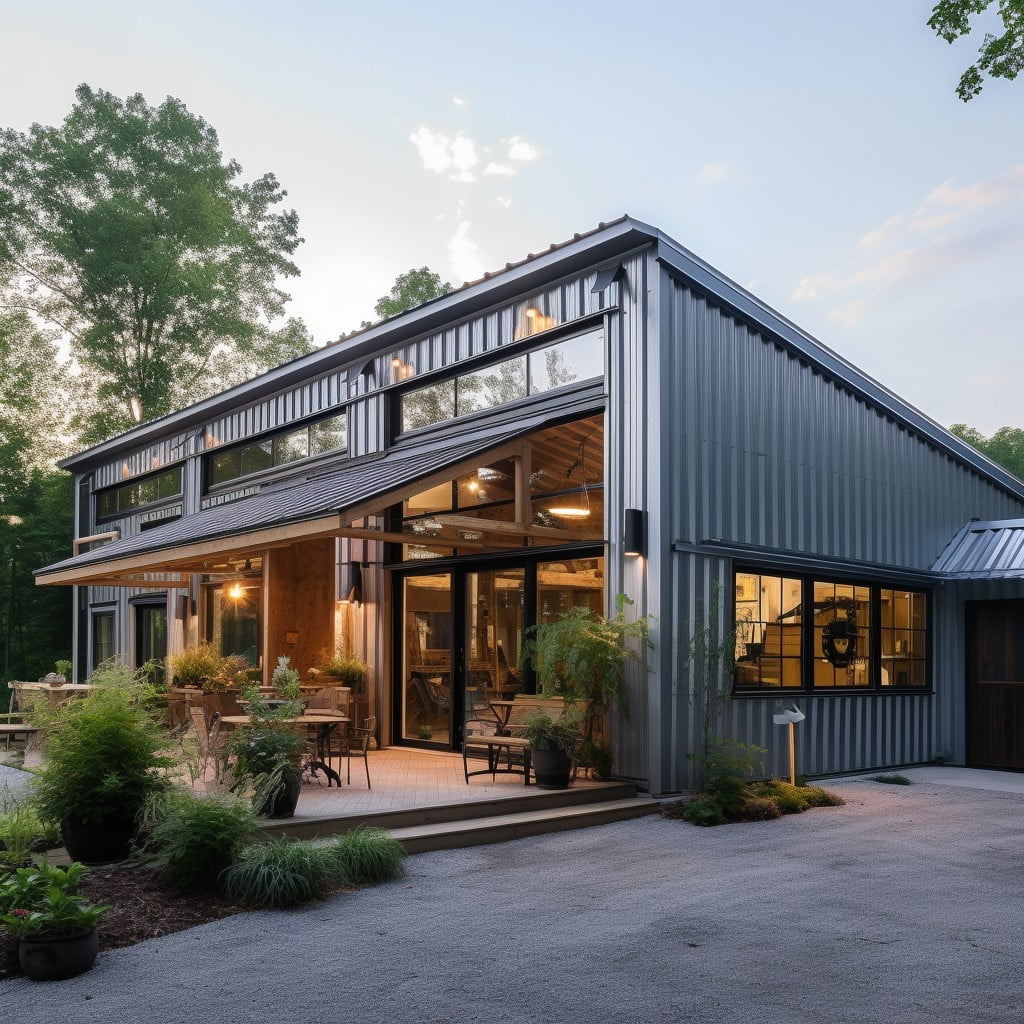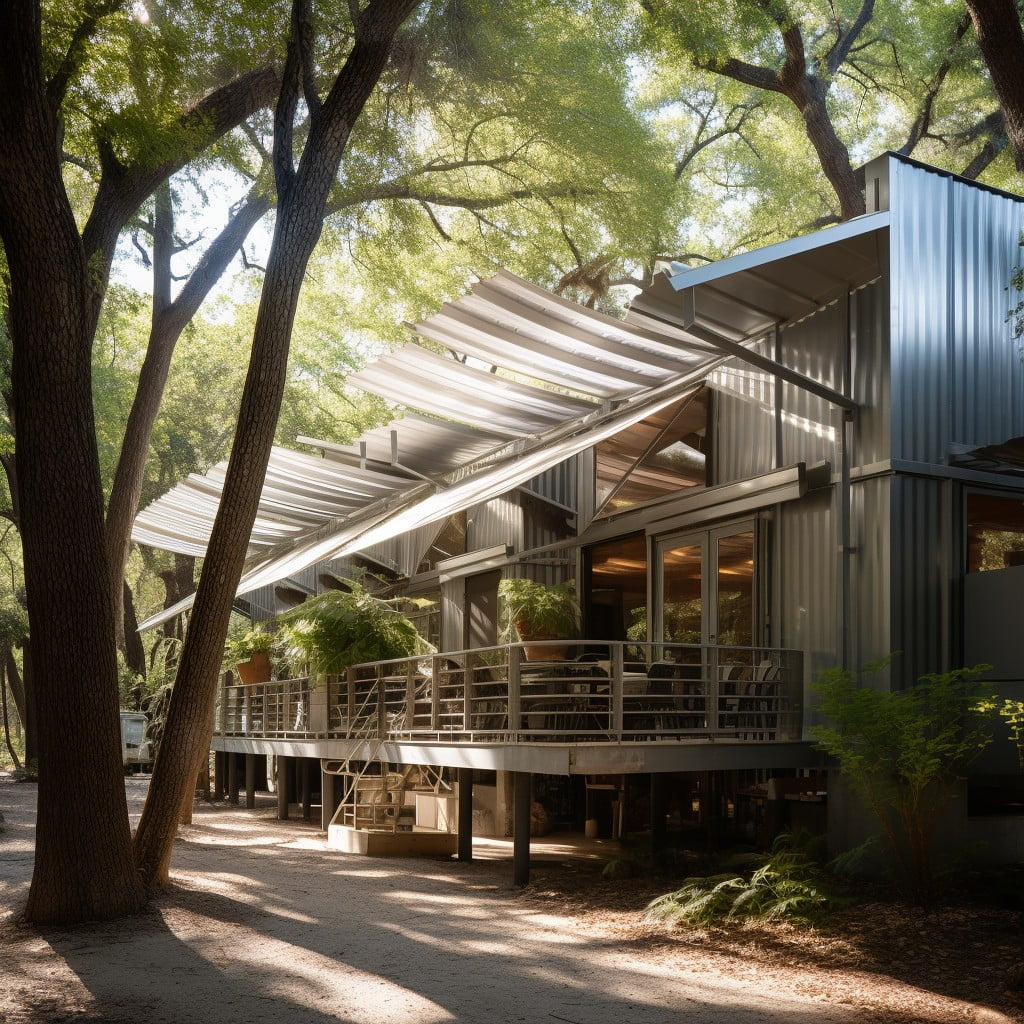Exploring effective strategies for cooling a metal building can significantly improve interior comfort levels and energy efficiency.
Cooling a metal building effectively requires a combination of smart design decisions and appropriate cooling technologies. Whether it’s a warehouse, a barn, or an office space, a metal building can be transformed into a comfortable environment, regardless of the outside temperature.
This article will provide comprehensive guidance on how to achieve this, detailing everything from insulation and ventilation to the use of energy-efficient cooling systems. By understanding and implementing these strategies, you can create a cool, pleasant space within your metal building, even during the hottest months of the year.
Key takeaways:
- Insulate the metal building to hinder heat transfer.
- Choose a lighter roof color to reflect sunlight and reduce heat gain.
- Utilize natural ventilation techniques like clerestory windows and skylights.
- Shade the building with vegetation, shade sails, or solar window screens.
- Apply reflective coating to the roof to minimize heat absorption.
Insulating a Metal Building to Keep Cool

There are several types of insulation suitable for a metal building, each with unique benefits. Fiberglass is the traditional choice, offering good thermal protection and noise absorption. For an eco-friendly choice, consider reflective foil. It bounces heat away, underlying the structure’s “skin” to extend its life. Then we have rigid board insulation. While slightly more expensive, it offers excellent heat resistance and is perfect for large spaces, like warehouses.
Remember, when insulating your building, the goal is to create a barrier that hinders heat transfer. This can significantly reduce the energy consumed for cooling, keeping the interior cooler in hot weather.
Pay particular attention to doors and windows as they are potential weak spots that can leak cool air. Proper sealing helps maintain a consistent internal temperature.
In conclusion, the right insulation for your building is dependent on your needs and budget. High-quality insulation, installed correctly, translates to cool spaces in the sizzling summer months.
Choosing Lighter Roof Color for Cooling

When it comes to the selection of roof color, opting for a lighter shade can significantly contribute to keeping your metal building cool. Heat absorption vastly depends on color; darker shades absorb more heat, while lighter ones reflect it. Thus, a color like white can, theoretically, reflect about 85% of the sunlight and subsequently reduce heat gain within the building. Other light colors such as beige or light grey are also effective, albeit to a lesser extent than white.
It’s crucial to bear in mind that the roof possesses the most exposure to direct sunlight, enhancing heat accumulation inside the building. By choosing a lighter roof color, you can dramatically decrease the heat intensity.
This simple yet impactful step not only provides a cooler interior environment but also promotes energy efficiency. By avoiding overheating in the building, you reduce the dependence on artificial cooling systems, thereby cutting down on energy costs and consumption.
Using Natural Ventilation Techniques in Metal Buildings

Maximizing the use of natural ventilation comes down to strategic building design. Incorporating elements like clerestory windows, vented skylights, and endwall louvers can significantly enhance air movement. Let’s delve deeper.
Firstly, clerestory windows. These openings, situated high on the walls of a building, allow hot air that rises naturally to escape, thereby pulling cooler air in from lower openings. Well-planned, they can vastly improve indoor air quality.
Secondly, vented skylights. By placing them at strategic sections of the roof, you not only invite natural light but also allow hot air to exit the building. An additional benefit is a reduction in electricity costs due to decreased reliance on artificial lighting.
Lastly, endwall louvers help to circulate air within the structure by creating an outlet for warmer air. They work very efficiently in conjunction with ridge vents, creating a continuous flow of air.
To summarize, the efficiency of these methods largely depends on the local climate, the layout of the building, and wind directions. Modifications to existing structures might be challenging but are typically worth considering given the long-term cooling and energy reduction benefits. Conducting a basic audit of your premises with these factors in mind can make a big difference.
Shading Metal Buildings Using Vegetation and Devices

Trees and shrubs offer natural shading solutions and significantly reduce the heat gain during summer. Planting deciduous types near windows and walls will create a shield against direct sunlight, and can reduce indoor temperatures by up to nine degrees. You should also consider fast-growing vine plants like ivy for quick results, as they provide an extra layer of insulation.
In addition to greenery, consider using shade sails or awnings, especially over windows and doors. These devices, made from durable, weather-resistant fabric, can cut down the sunlight entering the building, reducing the need for air conditioning. Another efficient alternative worth exploring is solar window screens. These cut down glare and heat ingress while still letting in natural light.
Remember, the location and direction of sunlight factor into your shading strategy. Use this information to target the high-sun areas, and use a mix of vegetation and devices for the best cooling effect. Effectively designed shading can reduce energy costs by up to 25% while creating an aesthetically pleasing environment.
Reflective Coating: A Key to Temperature Control in Metal Buildings
With the advancement in modern technology, it has become easy to manage the heat of a metal structure through reflective coatings, commonly known as cool roofs. These coatings work by reflecting the sun’s heat and thus, leading to a minimal absorption into the building.
The primary element of these coatings is usually white or contains special reflective pigments that reflect ultraviolet and infrared waves. As a result, significantly less heat is transferred into the building, reducing the need for air conditioning.
Keep in mind, reflective coating application has to be done correctly to be effective. It requires a clean and dry metal surface, during a low humidity day. Hiring professionals for this service can guarantee accuracy and increase the lifespan of the coating.
Apart from minimizing the cooling costs, reflective roofing can improve the resilience of metal buildings, lower peak energy demand, and potentially reduce power plant emissions by decreasing the load on the electrical grid. It indeed plays an imperative role in the effective temperature control of your metal building.
Bear in mind that the effectiveness of this solution can vary greatly depending on your geographical location, building design, and local climate conditions. Hence, it is advisable to carry out a thorough evaluation before making a decision.
Understanding the Benefits of Corrugated Metal Panels
Corrugated panels, characterized by their wave-like structure, provide more than just a visually appealing exterior. One notable advantage in functionality relates to heat reduction. Their unique design increases the surface area, maximizing the dispersion of heat from the sun.
Furthermore, these panels are often treated with a reflective galvanized coating. This protective layer not only acts as a robust barrier against rust and corrosion, but also reflects sunlight. By doing so, the coating significantly reduces heat absorption, thereby aiding in cooling your metal building.
Moreover, these panels offer high durability and structural strength. Despite being lightweight, they resist heavy winds and weather elements with great resilience. This characteristic aids in maintaining the integrity of the building, further contributing to the efficacy of other cooling measures.
However, accommodating ventilation spaces and fans with corrugated panels needs careful planning. It’s crucial to ensure that their installation doesn’t interfere with the air circulation system of your building, a key aspect of maintaining a cool environment.
Enhancing Air Circulation With Fans in Metal Buildings
Optimal air circulation is integral to cooling a structure, and fans offer an effective solution. Industrial ceiling fans are a smart choice in this regard as they produce a non-disruptive airflow while evenly distributing the cool air throughout the building.
Wall-mounted fans are equally useful and can steer the air in multiple directions. Inline duct fans reinforce the efforts of HVAC systems, pushing air through ductwork and increasing overall ventilation efficiency.
Think about integrating ventilation systems during the design phase, even if the locale experiences a predominance of cooler days. A well-ventilated system pays off in the long run, providing a comfortable interior environment while increasing energy-efficiency. Investing in an automated system can adjust the airflow depending on temperature changes, a cost-effective solution that ensures consistent cooling.
Remember to maintain your fans regularly for optimal performance. Dust accumulation or imbalance in the blades can affect the efficiency, leading to increased energy consumption or decreased cooling. Regular maintenance ensures peak performance, helping keep your metal building cool.
Position of Metal Building for Optimal Shade and Sun Exposure
Starting off, consider the direction that your building faces. The sun’s positioning and the consequent solar heat gain significantly impacts the indoor temperature. A building positioned to minimize exposure to the afternoon sun, when the heat is most intense, will inherently stay cooler.
Moreover, note the seasonal sun paths. Ideally, your building should take advantage of the lower winter sun for warmth while being shielded from the higher summer sun. If practical, the longer walls of a metal building should face north and south, while narrower ends should face east and west.
Relying on natural shade can enhance the cooling process, too. If possible, place your building near existing trees or structures that cast shadows during the peak heat of the day. However, trees should be far enough away to prevent damage from falling limbs.
Lastly, remember the effect of wind exposure. Architectural features like louvers, vents, and windows can be designed to take advantage of prevailing winds for natural ventilation, and thus additional cooling.
Think of it as a simple strategy to leverage the power of nature to help you maintain a comfortable temperature inside your metal building.
FAQ
How do you keep a metal shed cool in the summer?
To keep a metal shed cool in the summer, it is essential to install insulation and introduce an electricity supply for air conditioning or cooling devices.
How do you cool a hot metal roof?
To cool a hot metal roof, incorporate additional ventilation solutions into your structure and use wind-powered turbine vents to facilitate constant air flow over and through the roofing system.
How do I stop my metal building from sweating?
To prevent your metal building from sweating, insulate the walls and roof with vinyl-backed insulation, which halts the meeting of warm, humid air and the cool, dry surface of the panels, thereby averting the temperature from reaching the dew point.
What are the most efficient insulation options for a metal building construction?
The most efficient insulation options for metal building construction include spray foam, fiberglass, and rigid board insulation.
Can roof coatings assist in maintaining the temperature of a metal structure?
Yes, roof coatings can help regulate the temperature of a metal structure by reflecting solar heat and reducing cooling costs.
What role does ventilation play in reducing heat in a metal shed?
Ventilation plays a critical role in reducing heat in a metal shed by allowing hot air to escape and cooler air to circulate, thus maintaining a favorable temperature within the structure.
Recap




